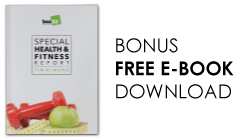Ladies, there’s no arguing that it’s challenging to maintain a fitness routine, as we all have extremely over-scheduled lifestyles to pursue.
As the years start drifting by, you find yourself wanting to maintain a certain level of fitness. However, we all know that fitness in our 20s/30s is drastically different from fitness in our 40s and after.
Trying to live up to the standards of our former and fitter selves just brings frustration. It can be that you were very active as a twenty and thirty-something and fitness was an important part of your health routine until things changed when back troubles appeared in your early 30s accompanied by maybe having children and the jumbling up of your hormones and causing uncontrollable weight gain.
We’ve all been there: feeling like somehow, somewhere in your late 30s or early 40s, your body has betrayed you. But it’s important to keep in mind that while these reasons are valid, they are no excuse to ignore your fitness routine, as it is so essential for your overall health.
Why is fitness over forty so important, and what is functional fitness?
Yes, getting fit and staying fit in your 40s is possible! But why is it essential, especially for women?
Women tend to lose muscle mass and bone density at a quicker rate than men as age progresses, due to declining testosterone and estrogen levels, which can make way for other health issues like diabetes, arthritis, heart disease, and cancer. Women’s metabolism also slows down considerably, which can lead to weight gain, usually around the middle. It’s like you can’t ever catch a break!
Functional fitness can be of great help here, according to Kurt, Functional Training Coach from Adaptive Strength.
“Functional fitness may seem to be just catchy and new, but when you look at its purpose and the benefits it gives, you’ll be impressed. It’s in the name: the functional exercises in a functional fitness routine try to recreate realistic daily activities, and they employ several muscle groups and joints simultaneously, giving you a full-body workout.”
You can think of it as getting a much bigger return on investing in your fitness. Incorporating functional moves into your routine will improve your endurance, balance, posture, strength, coordination, and agility.
More benefits of functional fitness & strength training
Well, the list can be a mile long because the benefits are so numerous. So, here are the top 3 that will resonate the most with you, ladies!
- Doing functional training the right way will improve joint mobility and stability and the efficiency of motor patterns, thus decreasing the possibility of injury and emphasizing the body’s natural ability to move more fluidly, especially as age progresses.
- Improved body composition, meaning a slimmer profile. The weight on the scale may not change much, but your percentage of body fat definitely will! Say hello to skinny jeans, we know you’ve missed them.
- Strength or resistance training causes a rippling wave of beneficial hormonal reactions.
Convinced of the importance of bringing more functional fitness back into your life? Great! However, you may be wondering how you’re going to deal with this new challenge.
How can you find a routine that is right for you, and how will you ever fit it into your hectic schedule?
There is no denying that your body has changed. As a result, what felt good and achieved results when you were 25 may now trigger nausea and give you heartburn even at just the thought of doing it!
Having a busy life, especially with kids, means that scheduling time for yourself is the top factor in deciding the type of exercise routine you can carry out, and more importantly, stick with, in the long run. You must do what it takes to make it work. Schedule your workout like it is an appointment with your health. A vital, unmissable appointment!
If you are looking for more in regards to your health, fitness and well-being, then you owe it to yourself to arrange a free consultation and assessment and learn more how Functional Fitness can help you.
Book your free consultation and assessment here.







